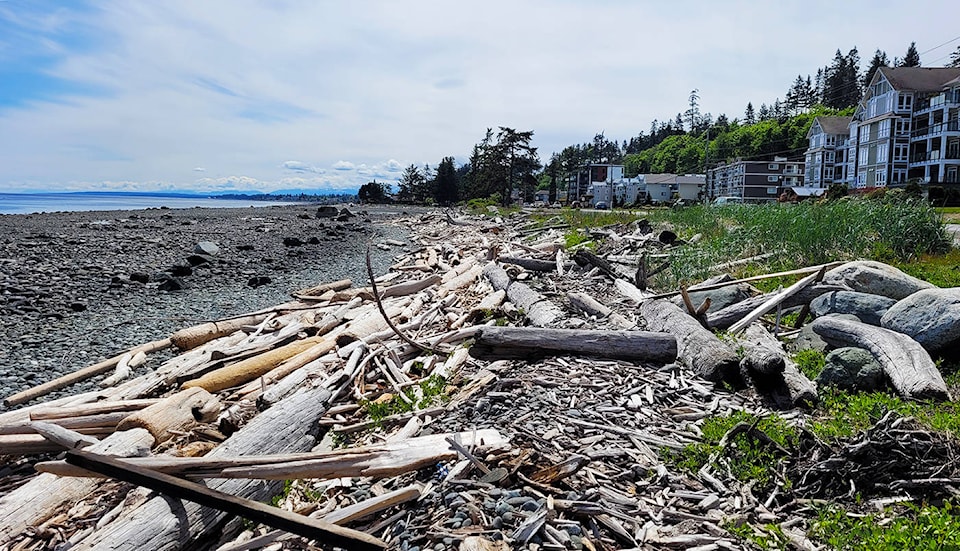Bruce Bradley thinks there’s a way that the city can clean up its shoreline, make it more accessible for people and create a positive economic impact for the community while doing so.
Bradley presented his idea to Campbell River city council April 26, saying that by using the scrap wood that is leftover from forestry operations, the city could cover the rough areas of the shore that are difficult to access with mulch.
The idea, Bradley says, would be to cover areas of the shoreline with wood chips and straw bales that would then be filled with sediment and biomass from incoming waves, creating a landscape that is easier for people to access – they wouldn’t have to scramble over large rocks and driftwood – and also decrease erosion and protect against flooding.
He calls the process “organic shoreline nutrification,” and says it would not only provide the aforementioned benefits, but also be an economic driver within the community.
“An enhanced beach area for recreation increases the value of the shoreline for residents, increases the value of the shoreline for tourism, increases the attractiveness of Campbell River as a business location and it supports the forest industry through sourcing materials,” Bradley says.
The “residual wood fibre” that is left behind on forested sites after primary harvesting takes place, Bradley says, “has historically been called waste residue and is often burned to reduce fire hazard on the site post-harvest,” adding that it has become more and more important that the industry finds a better use for this material. By using it to cover the shoreline as part of the “matrix” that will trap sediment, Bradley says, the city could create and support forestry jobs in the region and have much of the cost subsidized by grants that are available to source this material.
Bradley says that erosion and flood mitigation has been shown to create a return on investment of six dollars to every one dollar spent, but this process would make that number even higher.
Council was intrigued by the possibilities of such an approach, but said there would have to be extensive discussion and collaboration with Fisheries and Oceans Canada (DFO).
“We have to go through a pretty rigorous process with DFO when we clear out our existing boat ramps,” says Mayor Andy Adams, “and we have to have a plan in place to replenish the shores when we do a soft shore implementation to help prevent some of the things you are suggesting. DFO are a critical piece in determining what we can do with our shoreline.”
Coun. Charlie Cornfield put forth a motion to have city staff prepare a report on the possibility of including the strategy in its shoreline plans.
“I think there may be potential,” Cornfield says. “I think it’s worthwhile to see if this is a technique that may prove viable.”
